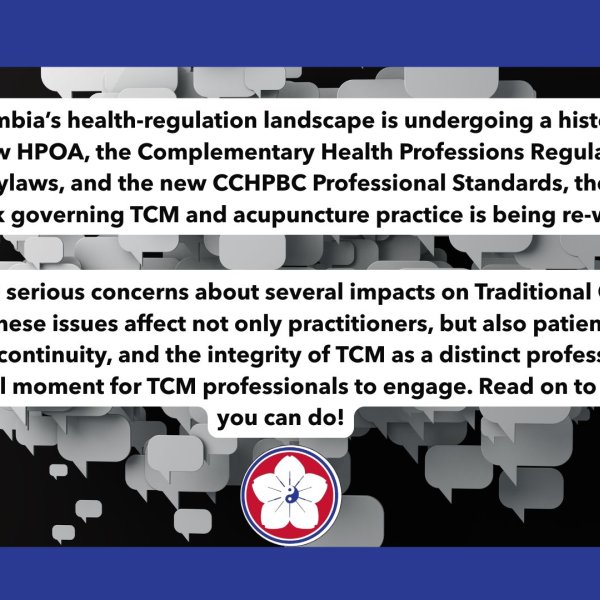If you are struggling with pain, chances are you have searched high and low for a solution to help provide you with relief – especially if the pain is chronic and has been present for quite some time. Acupuncture is an ancient treatment with roots in Eastern medicine and culture that has proven to be effective in the treatment and management of pain (Zhang & Wang, 2020).
How can acupuncture help with pain?
By Kelly Hamilton (TCM student)
If you are struggling with pain, chances are you have searched high and low for a solution to help provide you with relief – especially if the pain is chronic and has been present for quite some time. Acupuncture is an ancient treatment with roots in Eastern medicine and culture that has proven to be effective in the treatment and management of pain (Zhang & Wang, 2020).
How does acupuncture work to treat pain from a Western understanding?
With advances in scientific research, and established efficacy of acupuncture as a treatment modality for pain, there have been many studies published that seek to understand and explain how acupuncture works within a western framework. Perhaps the best and most widely accepted explanation available to date is that acupuncture needles stimulate the nervous system, and the channels follow the fascial lines of the body (Caruso, 2021; Zhang & Wang, 2020). When a needle is inserted into a specific location, which would be considered an acupuncture point, a cascade of chemical signals occurs in the body that help to down-regulate the pain responses that are carried by the nervous system (Zhang & Wang, 2020).
How is pain viewed from a Traditional Chinese Medicine perspective?
While acceptance and exploration into acupuncture’s mechanism from a modern science perspective is a major step forward and a worthy endeavour, there are gaps in the explanation that are hard to overlook. Traditional Chinese Medicine views the body and organ systems from a very different perspective, and therefore its foundational explanation of pain is different and more suited to explain the relief achieved by acupuncture overall. TCM asks: where is your pain, when did it occur, how did occur, and what is the nature of the pain? The answers to these questions inform the treatment. And the places the needles go will be different as a result.
There are MANY facets to pain management from a TCM perspective that are delineated in classic and modern TCM textbooks. Perhaps to simplify and keep this blog digestible, we will explore two main causes of pain which are: deficiency or excess (Maciocia, 2015).
Deficiency pain:
If your pain gets better with pressure, it is likely to be caused by a deficiency. This deficiency could be of factors including: blood, “qi” (vital energy of the body), heat, or cold.
Excess pain:
If your pain is worse with pressure, and better with warmth, it is likely to be caused by an excess. This excess could similarly be of factors including: blood, qi, heat, or cold. This excess could simply mean “too much” of something - the opposite of deficiency; and it could also mean stagnation of one thing in a specific place in the body. An example that may be easiest to conceptualize would be a stagnation of blood – wherein blood is accumulating and not flowing smoothly through a tissue or region of the body. A western example/equivalent of this could be a blood clot that is causing pain somewhere in the body.
So, how can acupuncture help with pain?
Acupuncture can help the body’s internal organ systems to better receive qi, absorb nutrients to replenish blood, and distribute heat throughout the body - therefore helping to restore balance.
Acupuncture can also help to clear stagnation in specific organ systems, so that factors such as qi and blood can flow smoothly again, thus reducing pain (Maciocia, 2015).
If I have pain in my lower back, why does my acupuncturist put needles in my feet, arms, or head?
A common question asked by those seeking relief of pain from acupuncture, is how the acupuncturist decides where to put the needles. It can be quite shocking to receive an acupuncture treatment meant to treat low back pain, for example, and have the practitioner stick needles in your limbs, not remotely close to the area of pain.
Acupuncture points follow channels along the body known as “meridians”. The points located along these channels have local actions, whereby they assist in pain management of nearby areas, and many have holistic energetic actions as well, whereby they can help other areas of the body not in direct proximity to the point of needle insertion (Maciocia, 2015).
References:
Caruso, C. (2021, November 1). Exploring the Science of Acupuncture. News & Research. Retrieved April 23, 2023, from https://hms.harvard.edu/news/exploring-science-acupuncture
Zhang, Y., & Wang, C. (2020). Acupuncture and Chronic Musculoskeletal Pain. Current rheumatology reports, 22(11), 80. https://doi.org/10.1007/s11926-020-00954-z
Maciocia, G. (2015). The Foundations of Chinese Medicine: A Comprehensive Text (3rd ed.). Elsevier.
What is Qi:
If you are at all familiar with Chinese medicine or acupuncture, you are likely to have heard the term “qi”. Qi can be defined as the vital energy, that flows through the body. We are born with innate qi, and we acquire qi through the nutrients we consume and the air we breathe. The proper and consistent flow of qi is important to our overall health.
When qi is abundant and flowing smoothly is when we are feeling our best.
Disclaimer:
The views, opinions, and content expressed in this article are those of the original author. We share this content for informational purposes only and do not guarantee its accuracy, completeness, or reliability. Any action you take based on the information provided in this article is at your own risk. For any concerns regarding the content, please refer to the original author or source.



Login to comment
Comments are only available to registered users. Not registered yet? Create a free account now.